- Home
- Ramachandra Guha
Gandhi Before India Page 4
Gandhi Before India Read online
Page 4
In 1874, when Mohandas was five, his father moved from Porbandar to Rajkot, on being appointed an adviser to the Thakore, or king, of that state. Two years later he was promoted to the office of Diwan. Kaba Gandhi now had to supervise the state’s finances, the registration of all properties, the working conditions of public officials, and Rajkot’s trade with other states. As Diwan of Rajkot, Karamchand also served on the Rajasthanik Court, a body of elders set up to mediate disputes between different chiefdoms in Kathiawar.29
We do not know why Kaba Gandhi made the move to Rajkot. Perhaps he left Porbandar because his ruler had been demoted to Third Class status. Or perhaps he calculated the new assignment had more prestige. The Agent to the Kathiawar States lived in Rajkot. Since he had the British Crown and the British Army behind him, the Agent was the most powerful man in the peninsula. Moving to Rajkot enhanced Kaba Gandhi’s connection to the paramount power. Notably, the Gandhis retained their links with Porbandar. Shortly after Kaba shifted to Rajkot, his younger brother Tulsidas was appointed by Rana Vikmatji as his Diwan.
As the centre of the British presence in Kathiawar, Rajkot had a stud farm, a mission run by Irish Presbyterians, an Anglican Church and a British garrison. It was an important railway junction, with lines linking it to other towns in the peninsula. Rajkot was also home to the Rajkumar College, modelled on a British public school, where the sons of the Kathiawari chiefs were sent to acquire the elements of an English education. Established in 1870, four years before Kaba Gandhi moved to the town, the College had a ‘fine building in the Venetian Gothic style’, as well as a gymnasium, racquet courts, a rifle range and a cricket pavilion.30
As an important man in the town – and region – Kaba Gandhi may occasionally have entered the portals of Rajkumar College in Rajkot. But the school itself was barred to his children. It was restricted to those of authentically Rajput lineage, who might take over as Ranas or Maharajas of their principalities. Some Muslim boys were allowed in – these being the sons or nephews of Nawabs. However, there was no question of a Bania student being admitted into the College.
Kaba Gandhi moved to Rajkot in 1874; his family joined him two years later, on his confirmation as Diwan. The boy Mohandas may (or may not) have attended a primary school in Porbandar. But of his schooling in Rajkot we have some very firm and reliable evidence. This is contained in two books written in the 1960s by a retired headmaster who, in a spring-cleaning operation, stumbled upon the records of Mohandas’s years in school.31
On 21 January 1879, Mohandas Karamchand Gandhi was admitted into the Taluk School, a short walk from his home in the district of Darbargadh. The subjects taught to Mohandas were Arithmetic, Gujarati, History and Geography. He was expected to learn ‘easy mental arithmetic’, read and memorize snatches of poetry, take accurate dictation, and acquaint himself with the main rivers and towns of western India.
To begin with the boy’s attendance was spotty: in the calendar year 1879 he went to school for only 110 days out of 238. This showed in the results of the final examination, where Mohandas was placed in the lower half of the class. In one set of tests he scored 41.25 per cent (the highest ranked student got 76.5 per cent, the lowest 37.6 per cent). In a second set of exams he did slightly better – at 53 per cent his performance was twelve percentage points above the dullard of the class, but also twelve points below the class leader.
In October 1880, Mohandas appeared for an examination to gain admission to Kattywar High School.32 Established in 1853, it was the oldest high school in the Peninsula. Mohandas did well in the entrance test – scoring 64 per cent – and was enrolled in the general register of the school. Now, for the first time, he would learn English along with the other subjects.
Kattywar High School was housed in a handsome two-storey structure built with a grant from the Nawab of Junagadh. Classes ran from 11 a.m. to 5 p.m. on weekdays (with an hour’s recess for lunch). On Saturdays, the school closed half-an-hour early. English teaching was given the maximum time – ten hours a week, devoted to reading, spelling and copying; that is to say, to the nurturing of skills essential to employment in the bureaucracy.
In 1881 the Gandhis moved from rented premises to their own home. Kaba Gandhi had bought a large house built in the Kathiawari style, an arched entrance leading into a courtyard around which the rooms were built. It was less than a mile from the High School, so Mohandas walked to his classes, wearing traditional Kathiawari dress – long, loose pyjamas, a buttoned-up tunic and a close-fitting cap.
The chronicler of Gandhi’s schooldays tells us that his performance in his new school was ‘discouraging’. In his first year, he passed in Arithmetic and Gujarati, but was ‘one of the three pupils who secured no marks at all in Geography’. In the end-of-year examination, he ranked 32nd out of 34 students in his division. The next year, 1882, Mohandas hardly attended school, apparently because his father had fallen ill. He could not appear for the annual examination. However, in 1883 he became more diligent. His attendance was regular, and in tests held at the end of the year he averaged a creditable 68 per cent in four subjects, these being Arithmetic, Gujarati, History and Geography, and English. In the terminal examination held in April 1884, he slipped slightly, ending with an average of 58 per cent.
Decades later, after Gandhi had become famous, an American journalist asked his sister Raliat whether her brother was ‘a good pupil in school’. She answered: ‘He was considered a clever student in his school. He always kept first rank’. Unfortunately, the historical record is at variance with the recollections of a loving sister.33
At home, Mohandas Gandhi mostly met members of his own, Modh Bania, caste. Among his classmates at Kattywar High School were Bania boys of other sub-castes as well as some Brahmins. He was also becoming acquainted, for the first time, with Christians and Christianity. Rajkot had several churches (Porbandar had none), and some very energetic missionaries. An Irish Presbyterian based in Rajkot, noticing that ‘the Brahmans and Vaniyas are everywhere looked up to as the intellectual class’, thought the conversion of upper-caste men could spark a mass exodus from the Hindu fold. The minister parked himself at street corners, acquainting passers-by with the greatness of Christ and the benefits of coming under His care. Mohandas heard the preacher on his way to school, but hurried on, displeased by the calumnies cast on his family’s gods.34
There were no Christian boys in Kattywar High School, but there were several Parsis, as well as a few Muslims. It was a Muslim named Sheikh Mehtab who became Mohandas’s closest friend. The son of a jailer in the nearby Gondal State, Mehtab was introduced to Mohandas by his elder brother Karsandas. Karsandas Gandhi and his Muslim friend were seriously uninterested in their studies. Both failed their exams repeatedly, so that they came to be in the same class as Mohandas, who was several years younger than them.35
As Mohandas later recalled, Mehtab ‘could run long distances and extraordinarily fast. He was an adept in high and long jumping’. The school’s headmaster, a modernizing Parsi named Dorabji Gimi, was very keen on sports and athletics. Whereas Mohandas was an unwilling and incompetent performer, Mehtab was ready to play, compete, and win. Their friendship was founded on this difference, on this very typical admiration for the tall, strong sportsman on the part of a boy who was both shy and unathletic. They became close, so friendly that on one occasion they went to a studio to have a joint portrait taken. The photograph, which has survived, shows the two of them sitting on adjacent chairs. Mohandas’s right hand slips diffidently off an ornate table, while Mehtab’s rests with a confident authority. The older boy is several inches taller. He is wearing a turban; Mohandas, a cap. From their postures it seems quite clear that it was not Mohandas who was the dominant partner in the relationship.36
Early in their friendship, Mehtab suggested to Mohandas that his lack of stature was due to his not eating meat. Besides, there was this verse, attributed to the Gujarati poet Narmad, which in translation ran:
Behold the mighty Englis
hman,
He rules the Indian small,
Because being a meat-eater,
He is five cubits tall.
Mehtab cooked meat for his friend by the river, in a house far away from the Gandhi home. The new food did not agree with Mohandas; besides, he feared the disapproval of his mother. When she asked, as she often did, what he had eaten that day at school, what answer would he give her? He was made more uncomfortable by Mehtab taking him one day to a brothel. His friend had paid the bill beforehand, but the novice was ‘almost struck blind and dumb in this den of vice’. Since he did not make any move, the prostitute became angry and showed him the door. The experience was chastening, and Mohandas drew away from the company of Sheikh Mehtab.37
Young Mohandas was also distracted from his studies by a new companion at home, his wife Kasturba. The precise date of their marriage is unknown. Even the year is disputed – 1883 by most accounts (since Gandhi remembered being married at the age of thirteen), but 1882 or 1881 by others.38 It was then common for Indians to marry very early. In fact, Mohandas had been betrothed twice already; both times, the girl had died before the marriage could be finalized. When the alliance with Kasturba was confirmed, the family chose to have a triple wedding – so that Mohandas’s brother Karsandas and a cousin would get married at the same time as him.
The ceremony was held in the Gandhis’ old home town, Porbandar. All that the bridegroom remembered of the marriage was ‘the prospect of good clothes to wear, drum beating, marriage processions, rich dinners, and a strange girl to play with’. Some additional excitement was provided by his father appearing for the ceremony swathed in bandages, as a result of the coach that was bringing him to Porbandar toppling over.39
Kasturba was from a Bania family in Porbandar. Her father, Makanji Kapadia, was a prosperous merchant, who traded in cloth and cotton.40 The family lived in a handsome two-storey house, which had twenty rooms and a large water-tank underneath. The house had wooden staircases, as well as elegantly carved shelves and door frames. The walls of the Gandhi home were bare, but those of the Kapadia residence had paintings displayed on them.41
Some months after the marriage, Kasturba moved to Mohandas’s home in Rajkot. Our knowledge of how the young couple got along – or did not get along – is based entirely on the recollections of the husband. He was, he says, ‘passionately fond’ of his wife. ‘Even at school I used to think of her, and the thought of nightfall and our subsequent meeting was ever haunting me.’ Fondness shaded into possessiveness; thus Mohandas was ‘for ever on the look out regarding her movements, and therefore she could not go anywhere without my permission’. Even visits to the temple with girlfriends attracted his jealousy. There was, at least on his part, a strong sexual attraction. Kasturba was illiterate; Mohandas was ‘very anxious to teach her’, but ‘lustful love’ left him no time.42
In the latter half of 1885 the head of the Gandhi household fell seriously ill. The children took turns nursing him. As Mohandas’s hands were ‘busy massaging’ his father’s legs, his ‘mind was hovering about the bed-room’ – this despite the fact that Kasturba was pregnant, which meant that ‘religion, medical science and commonsense alike forbade sexual intercourse’. One night, Mohandas was massaging the old man when an uncle offered to take over his duties. The sixteen-year-old seized the chance and ‘went straight to the bed-room’. He woke up his sleeping wife and prepared for a bout of love-making. A few minutes later they were disturbed by a knock on the door. It was a servant, come to inform them that Kaba Gandhi had just died.
Forty years later, Mohandas wrote, with an enduring sense of guilt and shame, that ‘if animal passion had not blinded me, I should have been spared the torture of separation from my father during his last moments’. When Kasturba lost their baby to a miscarriage a few weeks later, he blamed himself for that, too. It was his inability to control his consuming ‘carnal desire’ that had led to this ‘double shame’.43
From personal history remembered – or misremembered – let us return to the firm grounding provided by Mohandas Gandhi’s marks in school. In the summer of 1885, he performed creditably in his fifth grade examinations, averaging 55.75 per cent and coming third in his class. He did unexpectedly well in Mathematics (85 per cent), for which he was awarded a scholarship endowed by two Kathiawari princes. The next year his acquaintance with the English language deepened, when he was subjected to 200 pages from Addison’s Spectator and made to memorize 750 lines of Milton’s Paradise Lost. He came fourth in the end-of-year examination – now, in the words of the man who discovered his mark-sheets, Mohandas ‘could no longer be described as a mediocre student’.
In the last weeks of December 1886, Mohandas was admitted to Grade VII, the highest class in the school. In preparatory tests conducted by his own school he scored an average of 31.8 per cent in five subjects. This poor performance reflected nervousness, since he was soon to take the school-leaving examination known as Matriculation, conducted by Bombay University. In the third week of November 1887, Mohandas went to Ahmedabad to sit the Matric exam, travelling by train. This was his first journey by that mode of transport, as well as his first visit to the largest city in the Gujarati-speaking world.
The Matriculation of 1887 was, in purely intellectual terms, the sternest test of Mohandas’s life. Some of the question papers he confronted have survived. For his English paper he had to ‘write an essay of about 40 lines on the advantage of a cheerful disposition’. Among the terms he had to define were ‘pleonasm’ and ‘apposition’. For the Arithmetic exam, he had to calculate some very complicated equations, running into tens of decimal points. The Natural Science paper obliged him to provide the chemical formulae of, among other substances, lime and sulphuric acid. The History and Geography test asked him to ‘write a short history of Puritan Rule in England’ and to draw a map tracing the course of the Rhine. To display his knowledge of Gujarati, he had to translate into that language a passage in English which suggested that instead of erecting statues to (and of) Queen Victoria, the Golden Jubilee of her reign would be more appropriately marked by raising a fund ‘devoted to enabling India to take her place in the new industrial world’.
In January 1888, the Matriculation results were published in the Kattywar Gazette. More than 3,000 candidates had sat the test, of whom less than 30 per cent were successful. Mohandas was one of them. He did best in English and Gujarati, averaging about 45 per cent in each, but less well in Mathematics and History/Geography. His overall percentage was a modest 40 per cent. He was ranked 404th in the Province, out of 823 students who had qualified in the examination.44
Outside school, Mohandas’s education was enriched by his growing exposure to Gujarati literature. In the nineteenth century, the advent of the printing press and the appearance of the first newspapers gave an enormous boost to the languages of India. Gandhi’s mother tongue was no exception. The first Gujarati novel appeared in 1866, three years before his birth. In the same decade major works of prose and poetry were published by Narmadasankar Lalshankar (1833–66), ‘Narmad’, the man who, at one remove, had inspired the young Mohandas to experiment with eating meat. The writings of medieval poets appeared for the first time in printed editions – among them the works of Narsing Mehta, a Vaishnava preacher much beloved in Gujarat, who composed many odes in praise of Krishna, and who observed that God appears only to those who could feel the pain of others. These novels and poems were circulating in households such as Gandhi’s, being read by young men of his age who had his familiarity with the printed word.45
The writers whom Mohandas read most closely were Narmad and the novelist Govardhanram Tripathi (1855–1907). Both were improving reformers who saw British rule as a challenge to the Gujaratis, alerting them to their own faults and weaknesses. Narmad was against caste, against religious dogmatism, and for the remarriage of widows. He was also sharply critical of the corrupt and nepotistic ways of Indian rulers. Govardhanram Tripathi similarly deplored the tribalism of cast
e and the oppression of women; like Narmad, he thought British rule would shame Indians into discarding outmoded social practices and institutions.46
Narmad and Govardhanram were among the writers the young Gandhi read in Rajkot, their works and words merging or clashing with the words he read in school, exchanged with his friends, or listened to at home.
Gandhi’s father and grandfather had become diwans of Porbandar without any formal education. By the 1880s, however, systems of governance and administration were more structured. No longer would a quick if untrained intelligence suffice. An English education and an acquaintance with modern ideas were obligatory for young Indians seeking high office in British India, or indeed in the native states.
By the standards of the Bombay Matriculation, Mohandas Gandhi’s performance was undistinguished. Within his own family his scholastic record shone more brightly. His eldest brother, Laxmidas, had dropped out of school and become a minor official in Porbandar State. His other brother Karsandas had not been sent up to sit the Bombay University examination. As a successful Matriculate, Mohandas was the exception – his family expected him now to acquire more certificates.
In January 1888, Mohandas K. Gandhi enrolled for a BA degree in Samaldas College in Bhavnagar. Named for the state’s diwan, the College was the first degree-granting institution in Kathiawar. Mohandas travelled to Bhavnagar with a school friend, undertaking the first part of the journey by camel cart, the second by railway. He rented a room in a Vaishnavite locality. Here he would stay alone, and cook his own food.
There were thirty-nine students in Mohandas’s class – four were Parsis, the rest Hindus of either a Brahmin or Bania background.47 The subjects offered for the BA were English, Mathematics, Physics, Logic and History. There were five hours of lectures every day. The newcomer had particular difficulty with algebra. Once, when the mathematics teacher asked him to come to the blackboard and solve a sum, Mohandas pretended not to hear.

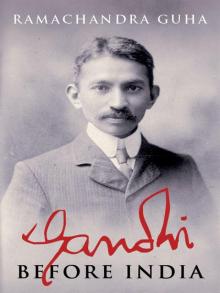 Gandhi Before India
Gandhi Before India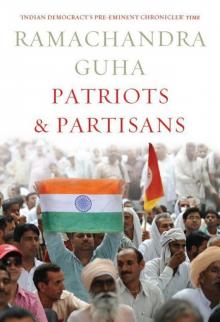 Patriots & Partisans
Patriots & Partisans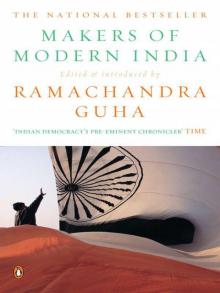 Makers of Modern India
Makers of Modern India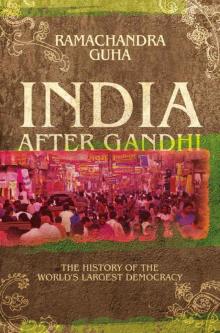 India After Gandhi: The History of the World's Largest Democracy
India After Gandhi: The History of the World's Largest Democracy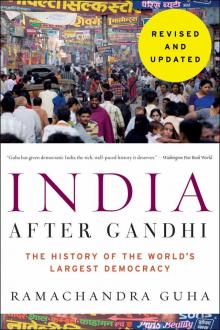 India After Gandhi Revised and Updated Edition
India After Gandhi Revised and Updated Edition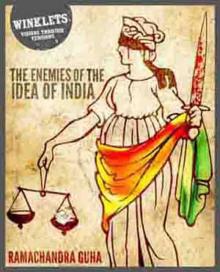 The Enemies of the Idea of India
The Enemies of the Idea of India Verdicts on Nehru
Verdicts on Nehru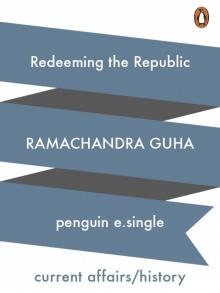 Redeeming the Republic
Redeeming the Republic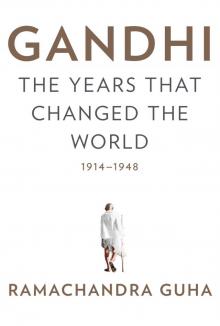 Gandhi
Gandhi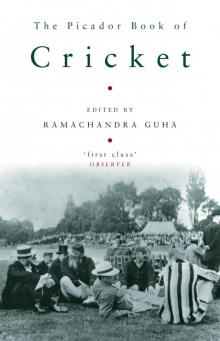 The Picador Book of Cricket
The Picador Book of Cricket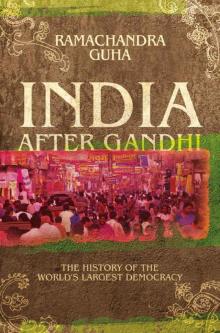 India After Gandhi
India After Gandhi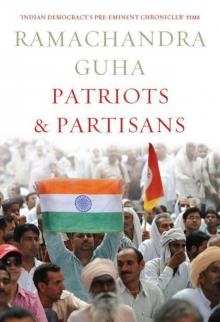 Patriots and Partisans: From Nehru to Hindutva and Beyond
Patriots and Partisans: From Nehru to Hindutva and Beyond